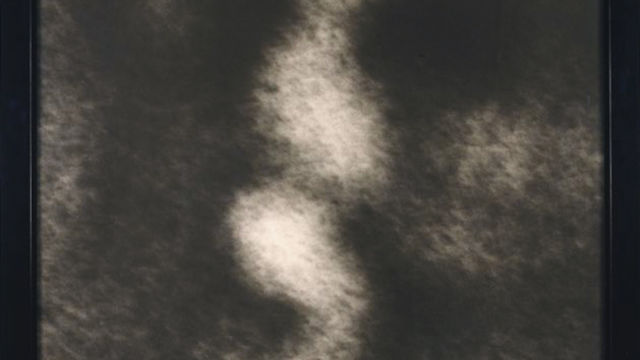
Allan McCollum
After moving to New York from his hometown of Los Angeles in 1975, Allan McCollum developed an artistic practice that integrated modernist painting, conceptual art, and legacies of the readymade as a means to interrogate the ontology of art. Applying the strategies of mass production to finely crafted handmade objects, McCollum carried modernist reductionism to its parodic extreme by determining and performing the nominal means by which painting, photography, and sculpture are recognized as such. His multiple series of nearly identical paintings and sculptures, however, reveal that those conventions exist not only within the borders of the art objects themselves but also in the relationships and expectations generated by the objects and in the various contexts of art's distribution and consumption.
McCollum began making his Surrogate Paintings in the late 1970s by gluing together wood and museum board to create objects that resembled matted and framed paintings. From these objects, he cast his Plaster Surrogates, now numbering in the hundreds, which are further distanced from painting by the reproductive process of casting and yet are each painted individually by hand. "I reduce all paintings," McCollum explains, "to a single 'kind,' to a universal sign-for-painting."# What appear to be five small, variously sized rectangular black paintings with white mats and reddish frames in Collection of Five Plaster Surrogates (1982/1990) reveal themselves, on closer inspection, to be five solid objects painted with enamel to give the impression of having component parts. Singular and repeatable like a logo, surrogates signify as paintings by virtue of their generic attributes, their contexts, and the mechanisms of display, spectatorship, and sale. This particular Collection of Five Plaster Surrogates (though surrogates evidently disrupt discourses of particularity) appeared in Andrea Fraser's 1991 performance May I Help You? at American Fine Arts, Co., in New York. Performers in the guise of gallery staff gave visitors a tour of an exhibition of McCollum's Plaster Surrogates, expressing a variety of reactions, including exclamations of appreciation and distaste as well as incomprehension. Fraser crafted the script using statements about art by dealers and collectors as well as quotations from the subjects of Pierre Bourdieu's sociological study Distinction: A Social Critique of the Judgment of Taste.# Fraser's performance, like McCollum's surrogates, enlists the contexts of art—including the gallery space, viewer behavior, and critical discourses—as its primary subject, extending the deconstructive impulses enacted by the surrogates to art's institutional and economic frames.

McCollum began his Drawings project in 1989 by creating custom-designed stencils from a set of forty curves, which form the basic vocabulary of all the drawings. Using the stencils, he has produced by hand hundreds of different graphite drawings (ensuring that no two are the same), which he displays in groups numbering in multiples of thirty. A group of 120 was included in the exhibition. Continually straddling the margins of singular/multiple, beautiful/banal, and decipherable/indecipherable, McCollum's many series critically occupy the place of art in a world of mass industrial production.
—Ruth Erickson

